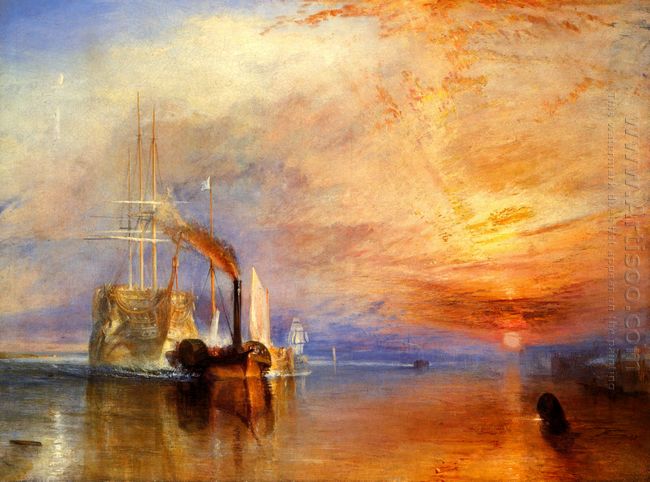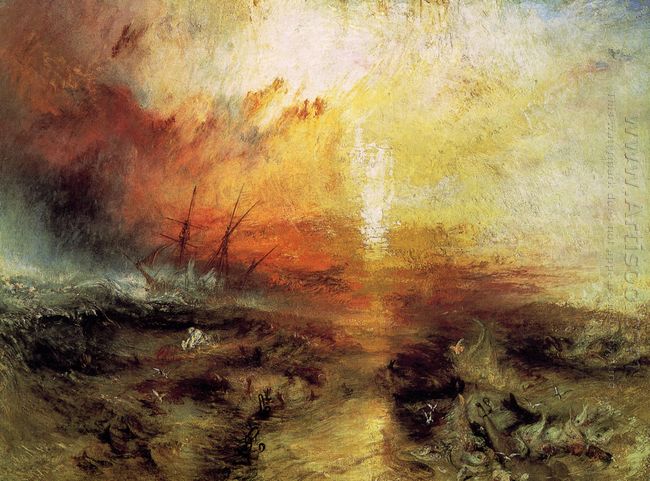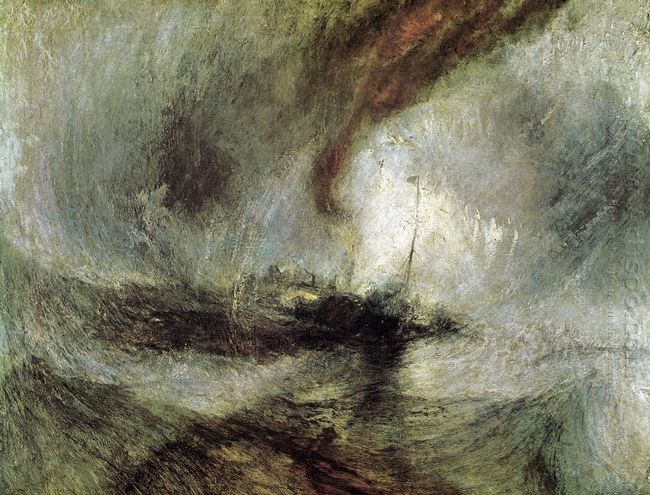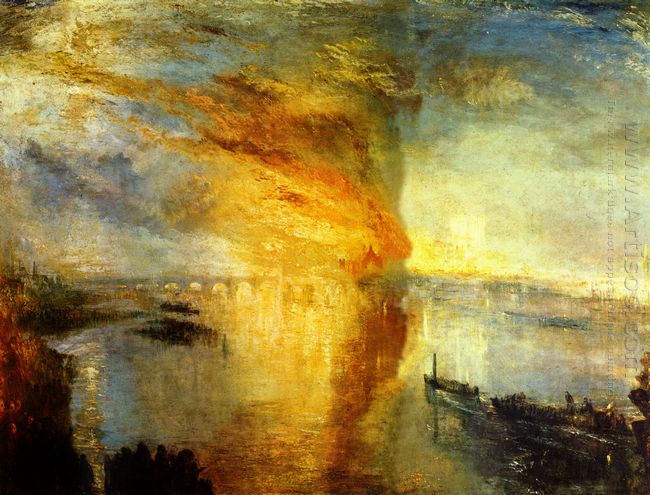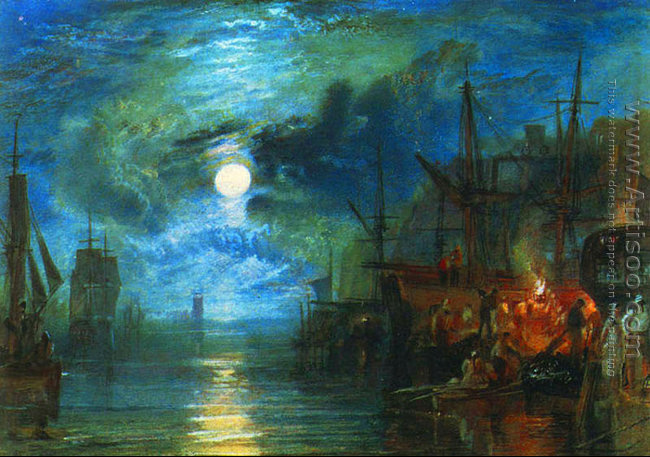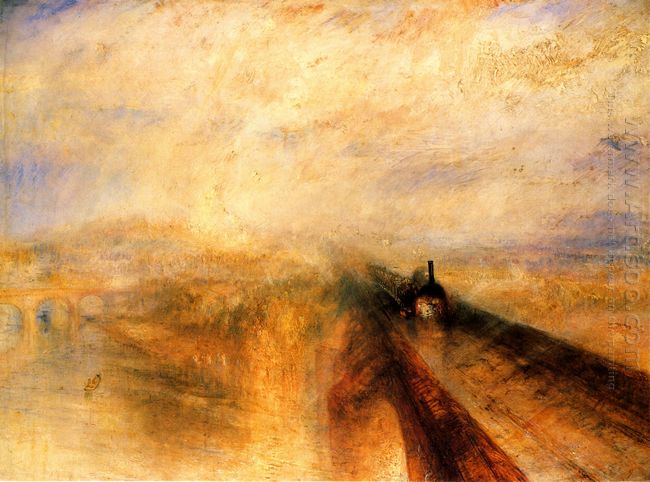Joseph Mallord William Turner was born near Covent Garden in London in a barber family. He once learned how to paint watercolor from Thomas Malton. When he was 14 years old, he was admitted to enter the Royal Academy School. One year later, his watercolor landscapes were exhibited and became widely appreciated. Then after graduation, Turner began copying old paintings for Dr. Monroe. He was particularly good at it. He became official academician of the Royal Academy of Fine Arts in 1802 and set up his own studio in 1804. During the period of the year 1807, as a Professor, he traveled several times to Europe painting many excellent watercolor exercises up to 1500 pieces.
Turner's painting is transparent and dazzling as his watercolor. In his old age, he is committed to the pursuit the effects of lights, fog, steam, sun, fire, water and reflection of light and so on. All these things mix with each other and make up a moving scene with rhythmical image. His paintings like Rain, Steam and Speed - The Great Western Railway, The Fighting Temeraire and Rain, Steam and Speed were created in this style.
Maybe Turner is the most popular English Romantic artist. He got a name of 'the painter of light', for he pays much attention to brilliant colors in his landscapes and seascapes. The romantic landscapes of Joseph Mallord William Turner can not be separated from the romantic works of the 19th-century British literature. Many famous Romantic poets, Byron and Shelley, have a good relationship with Tuner.
Turner is a diligent artist, he never stops painting until 1850. People are always fascinated in his paintings. If you do not have the opportunity to have a look at the first of the world top ten paintings The Fighting Temeraire, you may have heard about the most prestigious contemporary art award - the British Turner Prize, which is named after Tuner.
Turner, born near the Thames, seems to have the nature of a troubadour. In most of his life, he keeps traveling in the British Isles and Europe, observing and sketching. The most places he has traveled to are the countryside, seaside, mountain, lakeside and so on. Emotional and spiritual and productive are the features of Turner's paintings. He has ever created 1500 pieces of watercolor sketches in just two months. These are great exercises for Turner to observe the subtle changes of the natural object Turner and contributed to his later natural art style.

